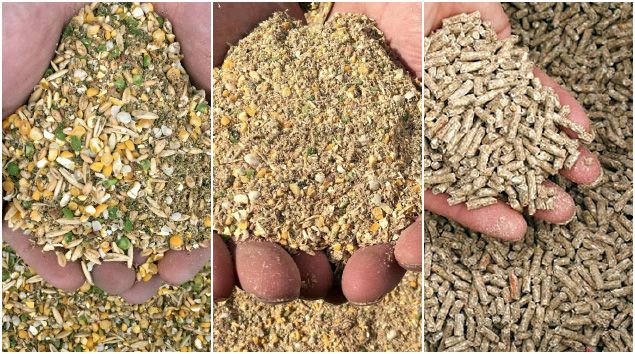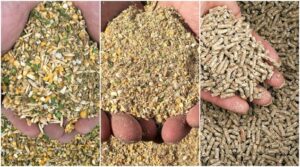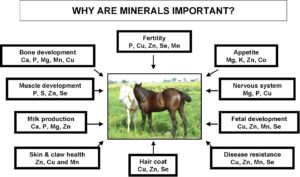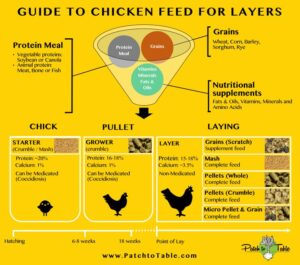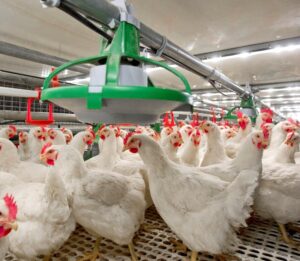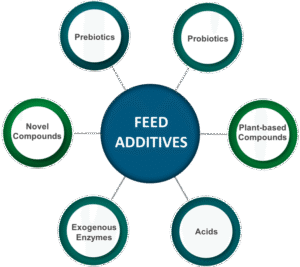Latest techniques for estimating nutritive value of feedstuffs, with how they work, strengths, and challenges. These reflect both incremental improvements on classic methods and newer approaches.
Thank you for reading. Don't forget to subscribe & share!
A. Emerging & Improved Laboratory / Analytical Techniques
- Near-Infrared Reflectance Spectroscopy (NIRS) Enhanced Models
- Uses NIR spectra to rapidly predict many feed attributes (DM, CP, fiber fractions, energy, sometimes digestibility or amino acid content).
- Latest improvements include expanded calibration sets (novel ingredients like insects, algae, food processing by-products), better algorithms (machine learning, sometimes chemometrics) to improve predictions of digestible nutrients or bioavailability.
- Strengths: rapid throughput, non-destructive, cost-effective per sample after calibration; good for screening and QC.
- Challenges: Calibration must cover feed diversity; performance drops when encounter feeds out of calibration domain; needs frequent recalibration and validation with in vivo/in vitro data.
- Ref: Rehman & Zulfiqar (2024) review recent uses of NIRS including novel feedstuffs. societyfia.org
- In Vitro Gas Production / Fermentation Techniques
- Measures gas production over time when feed is fermented with rumen fluid. Provides estimates of fermentable organic matter, energy availability, rate of fermentation, potential microbial protein yield.
- Recent research adapts these methods to novel feed ingredients (by-products, wastes) and also to quantify methane production along with nutritive value, important for environmental assessments.
- Strengths: cheaper, faster than in vivo rumen trials; good for comparative assessments among feeds; helpful to estimate energy and fermentation kinetics.
- Limitations: Rumen fluid source and handling (fresh, physiological condition) impacts results; in vitro environment cannot fully mimic in vivo digesta passage, absorption, animal physiology.
- FAO/IAEA recent work highlights potential for these methods to evaluate microbial protein synthesis, DM digestibility, etc. FAOHome
- Enzyme-Based Digestibility / Simulated Gastrointestinal Digestion
- Use defined enzymes (pepsin, pancreatin, etc.) to simulate digestion in monogastrics (or two-stage for ruminants). Often used to estimate ileal/true digestibility of amino acids or protein.
- Recent advances: better enzyme mixes, improved pH buffering, standardized incubation times, and adapting to novel feedstuffs.
- Strengths: more relevant than crude protein alone; can predict what portion of amino acids are bioavailable.
- Limitations: Enzyme activities may vary; only simulates certain parts of digestion; doesn’t account for absorption or metabolic losses.
- In Vivo Digestibility & Performance Trials with Advanced Measurements
- Classic “gold standard”: feed the animal, collect feces (and/or digesta), measure digestibility, performance (growth, egg laying, milk yield).
- Recent improvements: using better markers (like titanium dioxide, acid-insoluble ash) for easier and more accurate estimates, monitoring of gut microbiota, metabolic indicators, more detailed body composition measures.
- Strengths: gives real animal response; includes all physiological processes.
- Challenges: expensive, time-consuming, requires ethical and logistical setup; variation due to animal, environment, feed processing.
- Integrated “Multi-Omics” & Machine Learning / AI Prediction Models
- Combining chemical data (proximate, fiber, minerals), digestibility/in vitro data, spectral data (NIRS or hyperspectral imaging), and performance data to build predictive models using AI/ML.
- Also increasing use of hyperspectral imaging for quality or health related predictors (e.g. detecting spoilage, fungal contamination) which indirectly affect nutritive value.
- Strengths: enables prediction of nutritive value without full in vivo trials; can incorporate many variables; fast decisions.
- Limitations: Requires large, good quality datasets; models can overfit; sometimes “black box”—hard to interpret biologically; local validation needed.
B. Applications & Case Examples (Recent Studies)
- “From Food Waste to Sustainable Agriculture: Nutritive Value of Potato By-Product in Total Mixed Ration for Angus Bulls” (2024) — Evaluated waste by-product with chemical analysis & performance feeding in bulls to see how potato by-product contributes to energy and protein in TMR diets. MDPI
- Frontiers (2024): “Determining the nutritional values of new corn varieties on pigs and broilers” — combined in vivo digestibility trials (digesta collection, freeze-drying, etc.) with chemical analysis to compare new varieties. Frontiers
- “Animals: Nutritive Value and Valorization of New Feedstuffs for Ruminant Nutrition” (2023) topical collection — many papers use improved in vitro digestibility, fiber fractionation, and fermentation techniques to assess new fodder crops. MDPI
C. Comparison: Validity & When to Use Which Technique
| Technique | Best Use / Good for | Pros | Cons / Limitations |
|---|---|---|---|
| NIRS (with good calibration) | Routine QC, assessing many samples quickly, preliminary ingredient evaluation | Fast, low per-sample cost, non-destructive | Calibration domain dependence; less accurate for novel feeds not in calibration set |
| In Vitro Gas / Fermentation | Comparing novel or by-product feed ingredients; estimating energy / fermentation patterns | Less expensive, quicker than in vivo; gives info on fermentation rate, potential methane etc. | Variability due to rumen fluid sourcing; doesn’t replicate absorption or passage rate; results need calibration or validation vs in vivo |
| Enzyme digestibility / simulated GI digestion | Predicting amino acid bioavailability; small scale labs; monogastrics | More nuanced than CP; useful for feed formulation; lower ethical/animal cost than whole-animal trials | Enzyme sources, conditions vary; doesn’t include whole-animal metabolism; may miss anti-nutritional or interaction effects |
| In Vivo Digestibility / Performance Trials | When high accuracy needed; validating novel feeds; regulatory or feeding standard inclusion | Gold standard; includes all physiological effects; most directly relevant to production outcomes | Costly; time and resources; animal welfare; less throughput; environmental & individual variability |
| Machine Learning / Integrated Prediction Models | Predicting across large feed databases; evaluating new feeds; decision support | Can integrate multiple data sources; can reduce need for many in vivo tests; can be dynamic | Requires good quality training data; risk of overfitting; local adaptation needed; transparent validation needed |
D. Recent Gaps & Future Directions
Need for standardization across labs for in vitro methods (enzyme mixes, incubation times, rumen fluid handling).
- Benchmarking newer feeds (e.g., insect meals, single-cell proteins, algae) which often have anti-nutritional factors or unusual composition, so classic predictions may under- or over-estimate nutritive value.
- More work in hyperspectral imaging and remote sensing to assess feed quality (maturity stage, spoilage, moisture, fungal contamination) before harvesting or during storage.
- Improved AI/ML models with regionally collected data (feeds, animal genetics, environment) so predictions are valid locally.
- Integration of environmental impact metrics (e.g. methane emissions, nitrogen excretion) into nutritive evaluation, so feed evaluation considers sustainability along with productivity. FAO/IAEA in vitro methods are advancing here. FAOHome

